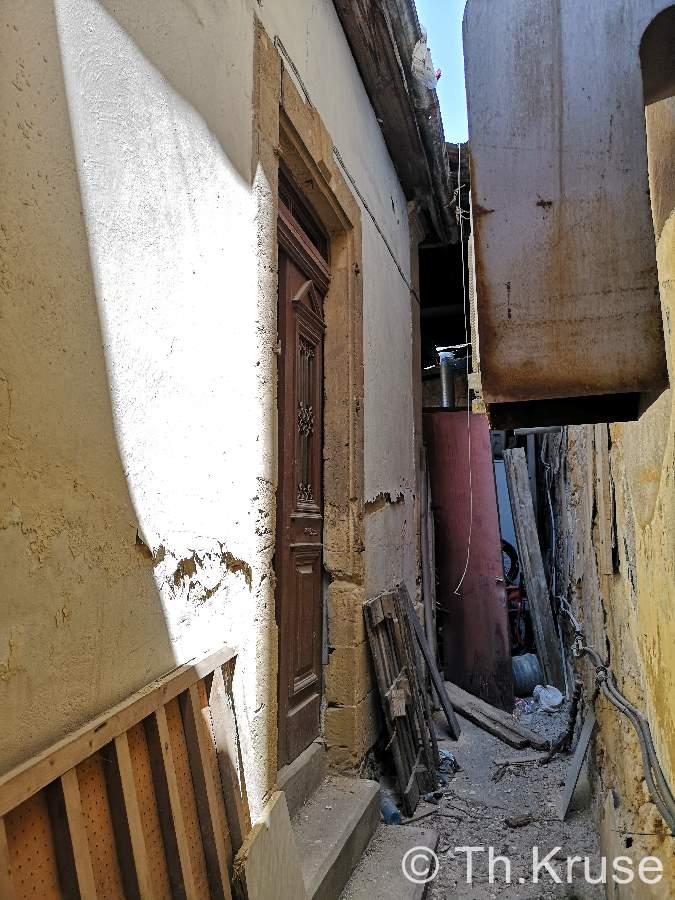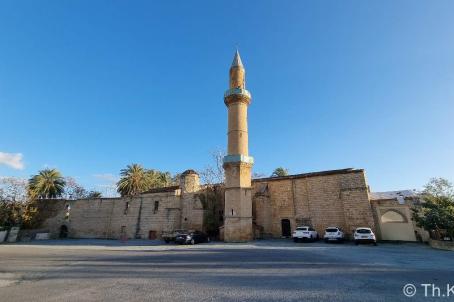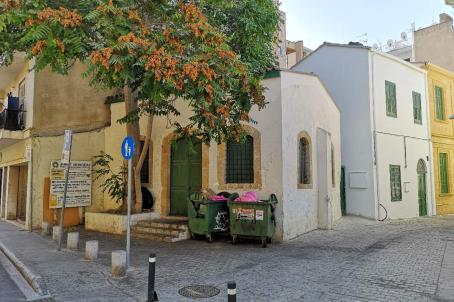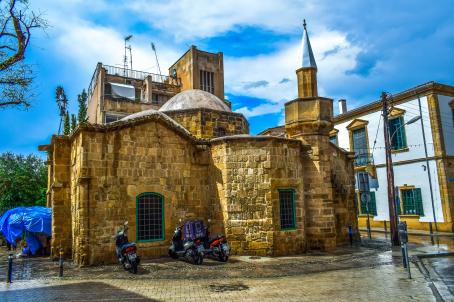Nicosia Nöbethane Mescit

The exact construction date of Nöbethane Mescit, located in the quarter with the same name, is not known, but can be dated to around 1867, based on records. The name of the mescit derives from the fact that, in Ottoman times, the changing of the guard was celebrated in front of the building (nöbet = guard; hane = house).
About this building
The one-room building was initially surrounded by a spacious courtyard-like area, which was gradually built over. In 1937, the eastern part of the plot was developed. The new building had a distance less than 2 m to the mescit. Some time after this development, the Evkaf administration decided to build further shops around the mescit. When these additional shops were completed, the building was therefore entirely enclosed by buildings. There is no written evidence of repairs to the mescit, but it is said that a certain Hodja Salih Efendi was the caretaker of the mescit. After his death in 1956, the mescit was closed. One reason for the closure may have been the beginning of the intercommunal tensions, but also the fact that for many years hardly any Muslims had lived in the neighbourhood, may have played an important role.
For more information on this building visit https://www.cyreligiousheritage.org/districts/Nicosia/village/65





